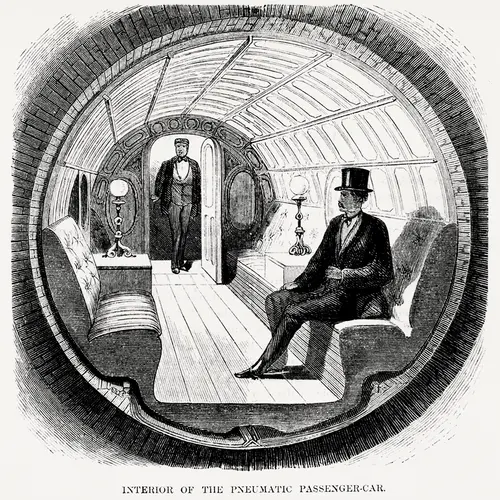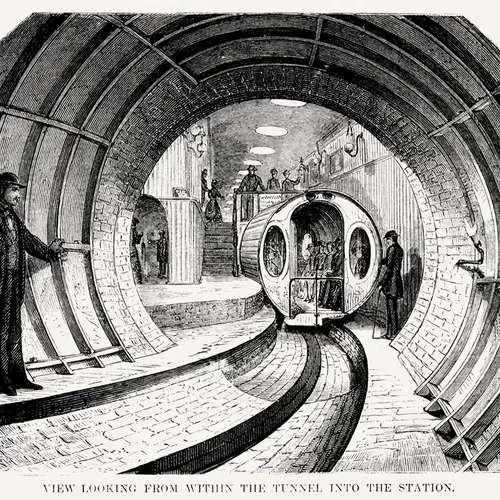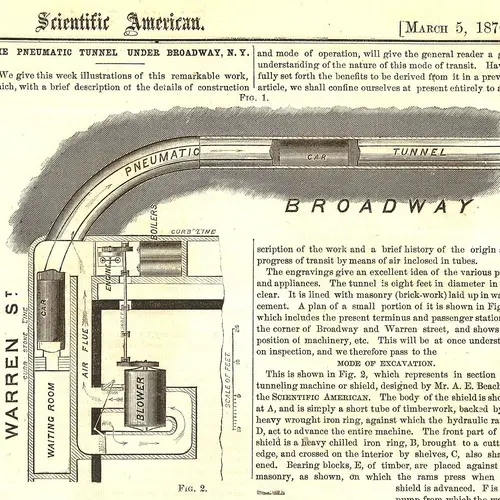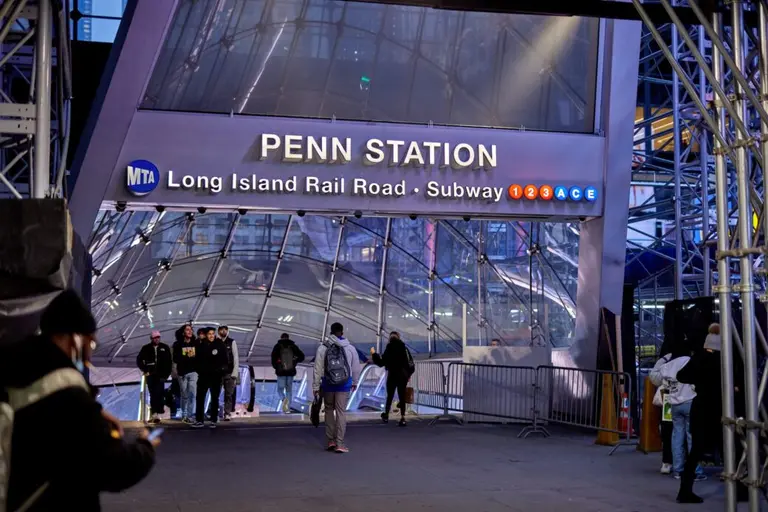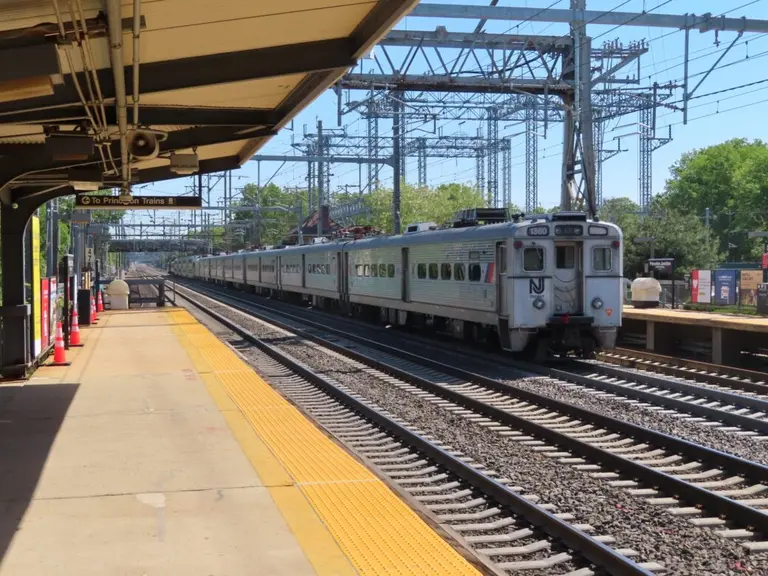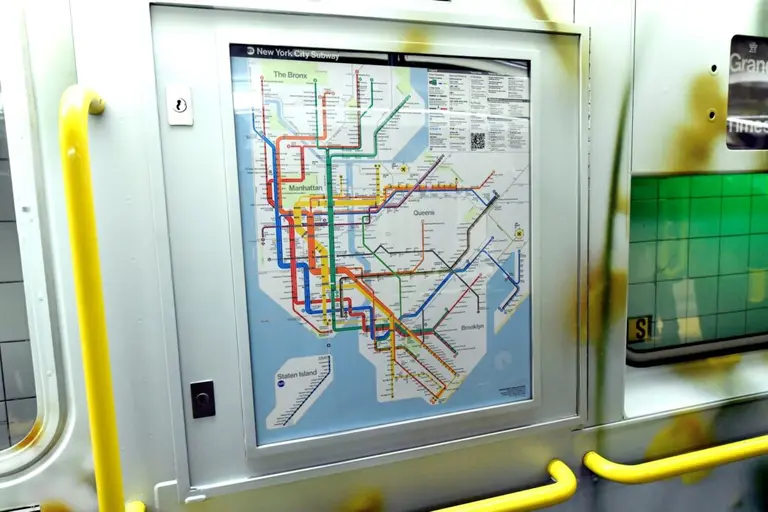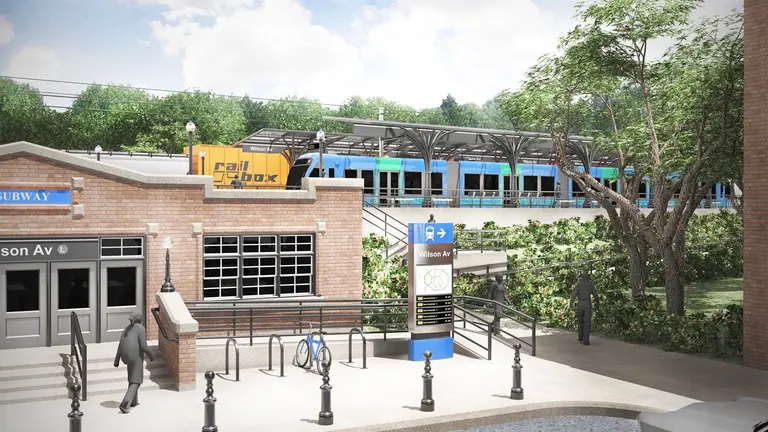NYC’s first subway was a pneumatic tube that moved passengers one block
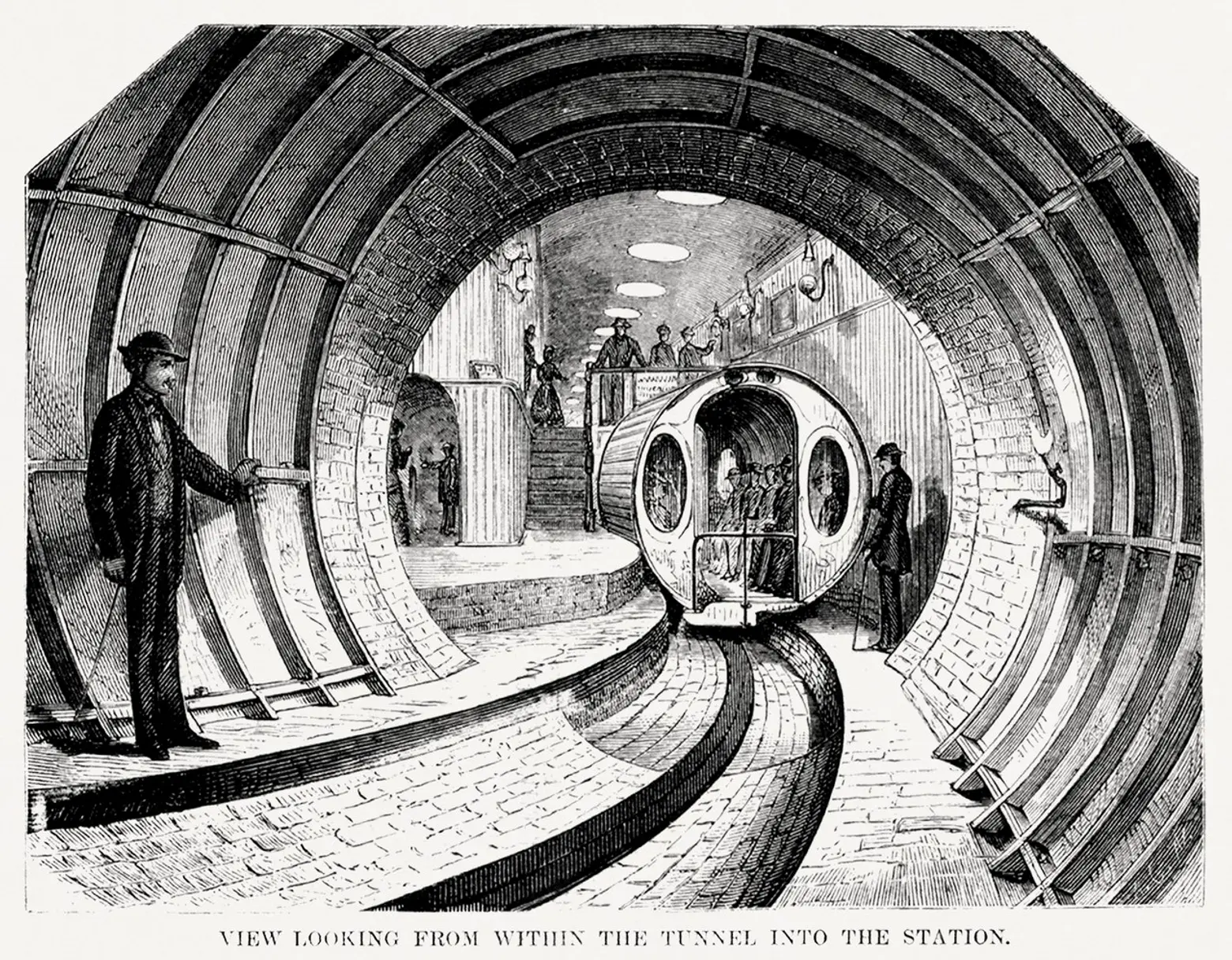
Image via Rawpixel/ Wikimedia Commons
Nearly 150 years ago, something quite momentous happened in New York history: the first subway line was opened to the public. The system was the invention of Alfred Ely Beach and his company Beach Pneumatic Transit Company. Beach put up $350,000 of his own money to build the first prototype and tunnel and his company managed to put it together, somewhat covertly, in just 58 days. The tunnel measured about 312 feet long, eight feet in diameter, and was completed in 1870.
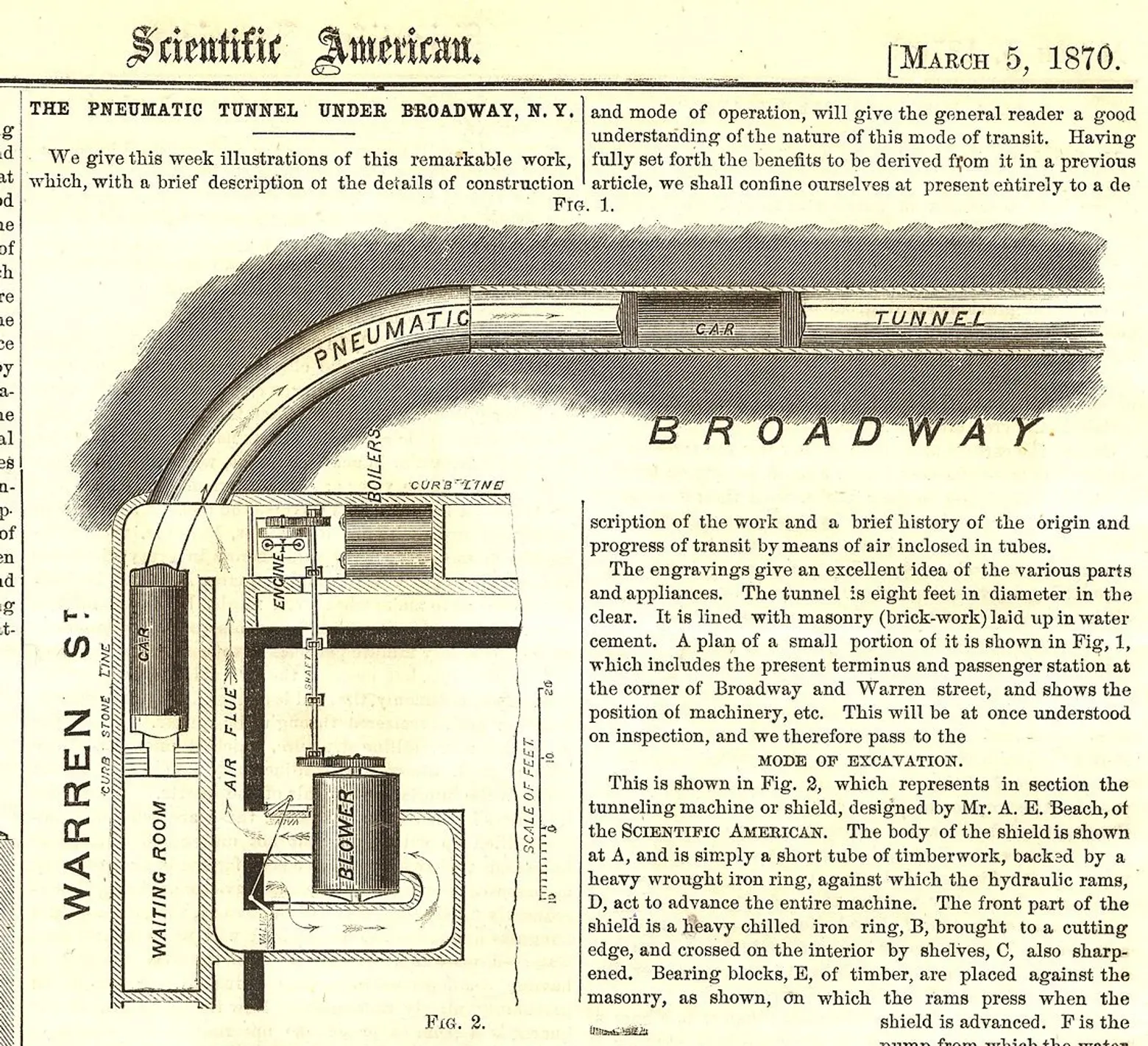
Image via Wikimedia Commons
Alfred Ely Beach was an inventor, patent lawyer, and long-time editor of editor of Scientific American. One of his earliest inventions was a typewriter for the blind, but it was the Beach Pneumatic Transit that he is most famous for. In the 1860s, there was a traffic problem in New York, especially along the main thoroughfare of Broadway. Inspired by the underground Metropolitan Railway in London, Beach proposed a pneumatic train, as opposed to the more common steam engines of the time. He first demonstrated the system at the American Institute Fair in 1867.
But when he initially filed for permits to construct the project beneath Broadway, on the eastern edge of what we know today to be Tribeca, he claimed that he was simply building postal tubes beneath the street (pneumatic tubes had recently been installed to transport mail in London). Beach later had the permits amended, slyly claiming he was excavating a single large tunnel wherein the smaller tubes could reside. However, construction was obvious and well-documented by the papers, but Beach remained hush until the New York Tribune published an article—which many suspect was planted—a few weeks before the line’s opening.
The line’s opening was a momentous occasion but not without problems. Although the ribbon was cut on February 26, 1870, the subway wouldn’t move a soul for at least another week due to engine failure. But once the appropriate repairs were made, passengers (22 at a time) enjoyed a very, very short journey under Broadway that took them from Warren to Murray Street and back.
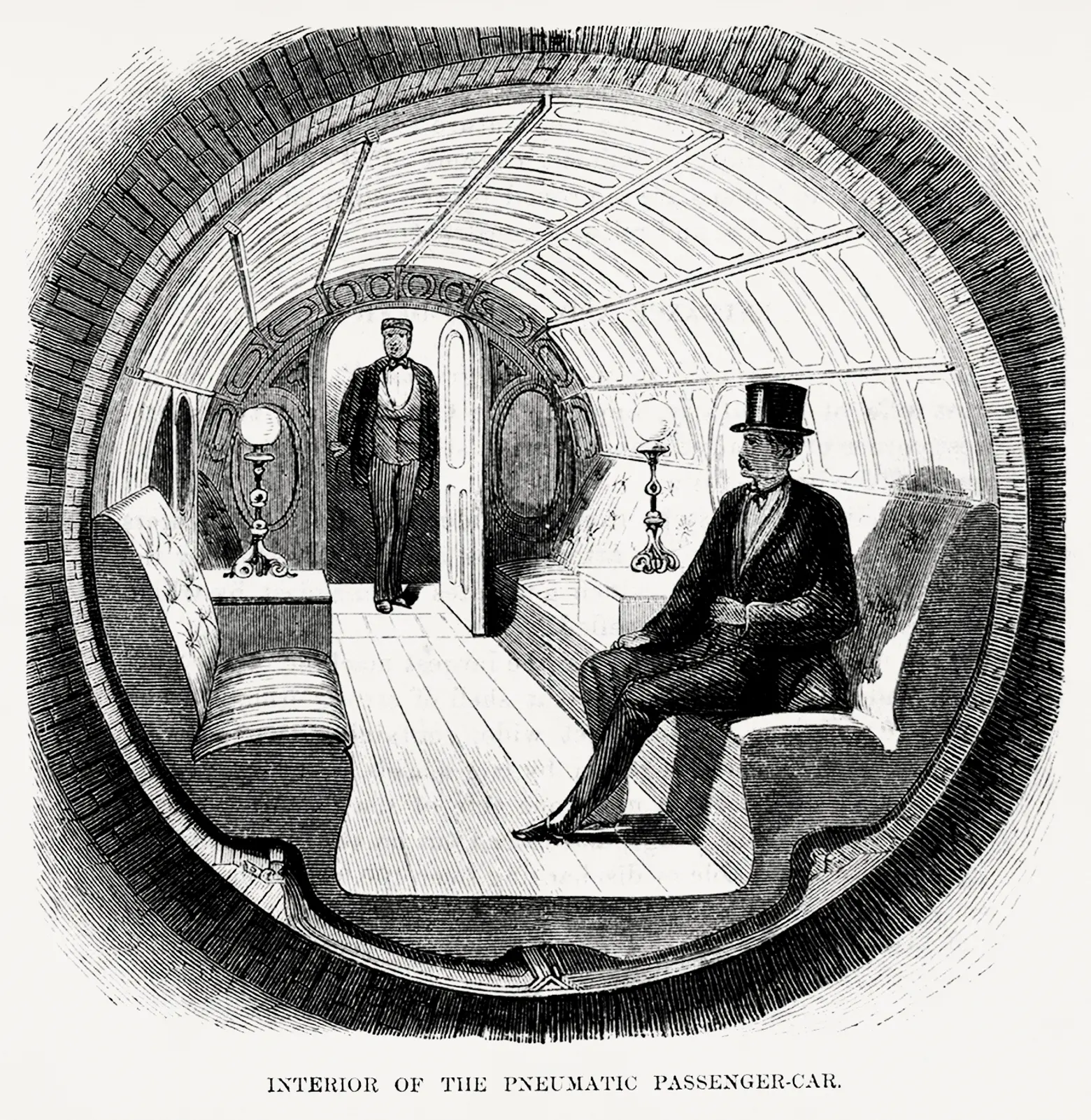
Illustration of the interior of the pneumatic passenger-car by New York Parcel Dispatch Company. Image via Rawpixel / Wikimedia Commons
Riders would enter via the popular Devlin’s Clothing Store located at 260 Broadway, the Rogers Peet Building, on the southwest corner of Warren Street and be welcomed into a very ornate and luxurious station filled with frescoes, easy chairs, zirconia lamps, statues and even a goldfish pond to contemplate upon while waiting to board. Each car could hold 22 people, and riders paid a 25-cent admission that went to the Union Home and School for Soldiers’ and Sailors’ Orphans. Given the short ride, which was about a block long, most of those who boarded did so simply out of curiosity.
More than 11,000 people rode the first two weeks Beach’s line was open, and 400,000 rides were given in the first year. Beach hoped to extend the project about five miles to reach Central Park, but his dream was never realized for an array of reasons, including the stock market crash of 1873, various political hurdles (Boss Tweed was staunchly against funding the project), and the introduction of the city’s elevated railway. By the time Beach got the OK to build more track in 1873, the underground line had fallen out of favor. The project shuttered that same year and the tunnel entrance was sealed with the subway car inside. Today the station that was has been eaten up by the present-day City Hall Station along the N/R line under Broadway.
In more recent years, the Beach Pneumatic Transit has gotten a resurgance of attention as an early model of what Elon Musk is proposing for his Hyperloop proposal.
Editor’s Note: This story was originally published on December 20, 2016, and has been updated.
RELATED:
